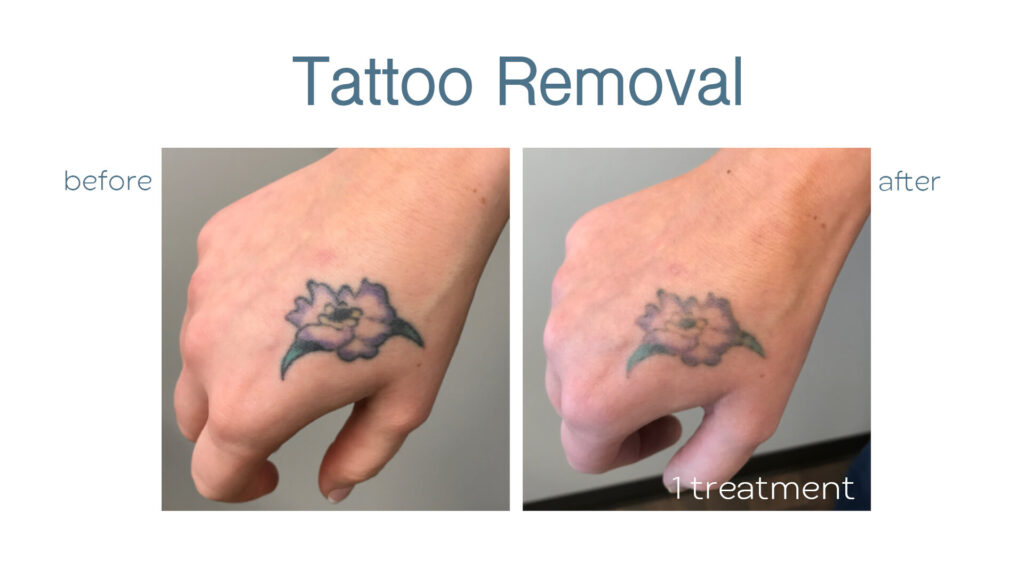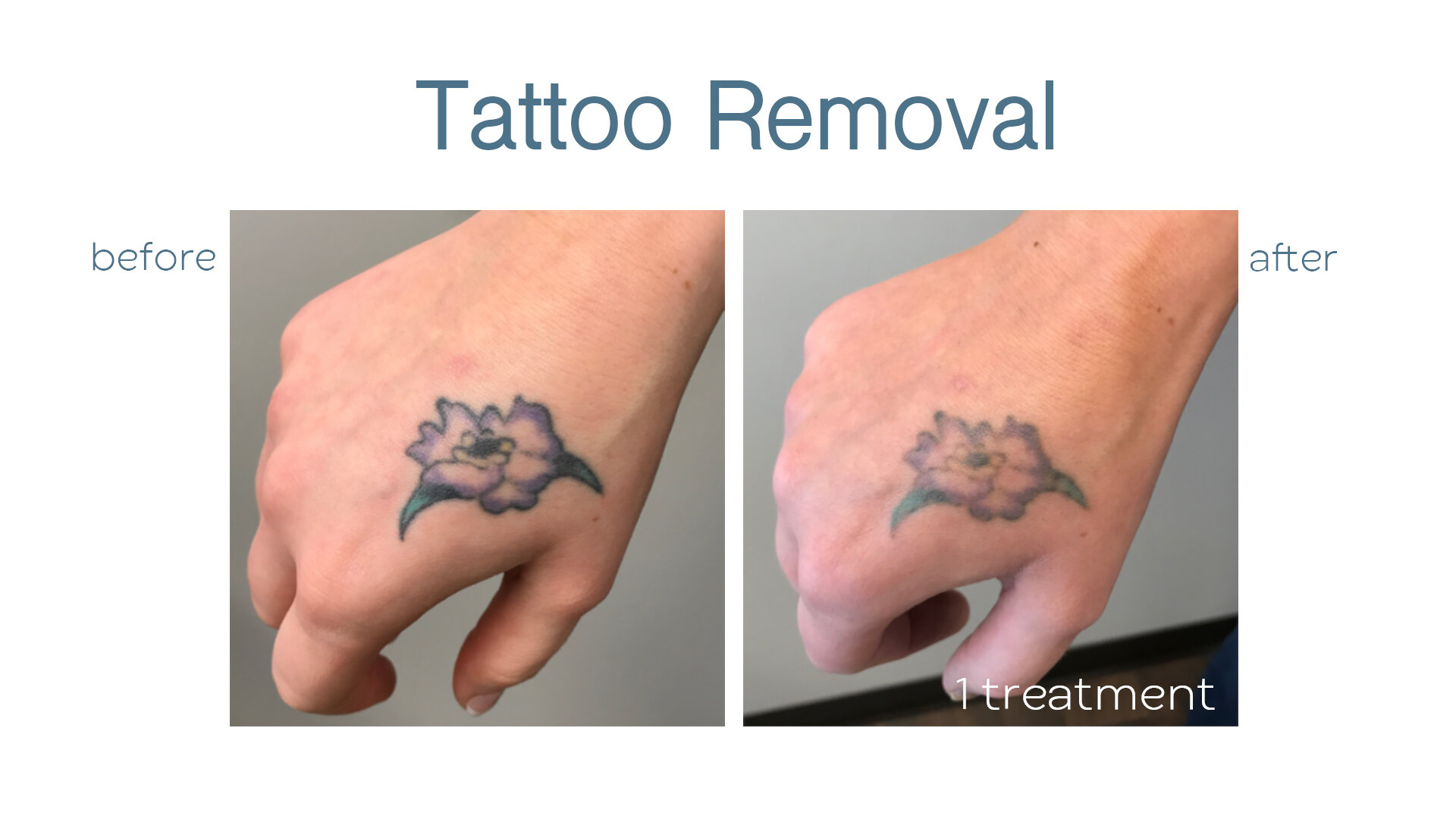
How to Remove a Small Tattoo: Exploring Your Options
Regret is a common human experience, and sometimes, that regret manifests as a small tattoo you got on a whim. Whether it’s a faded heart on your ankle, a poorly executed initial on your wrist, or a symbol that no longer resonates with you, you’re not alone if you’re wondering how to remove a small tattoo. The good news is that removing a small tattoo is generally easier and more affordable than removing a larger one. This article will explore the various methods available, their effectiveness, potential side effects, and what to consider before making a decision.
Understanding Tattoo Removal Options
Several methods exist for how to remove a small tattoo, each with its own pros and cons. The most common and effective methods include:
- Laser Tattoo Removal: This is considered the gold standard for tattoo removal. Lasers break down the tattoo ink into smaller particles that the body can then eliminate.
- Surgical Excision: This involves cutting out the tattooed skin and stitching the remaining skin together. It’s best suited for very small tattoos.
- Dermabrasion: This method involves sanding down the skin to remove the tattoo. It’s less precise than laser removal and can leave scarring.
- Chemical Peels: These involve applying a chemical solution to the skin to peel away the top layers, including the tattoo ink. It’s generally less effective than other methods.
- Tattoo Removal Creams: These creams claim to fade tattoos over time, but their effectiveness is highly debated and generally considered minimal.
Laser Tattoo Removal: The Most Popular Choice
Laser tattoo removal is the most popular and often the most effective method for how to remove a small tattoo. It works by targeting the tattoo ink with concentrated pulses of light. The ink particles absorb the light energy and shatter into smaller fragments, which are then naturally eliminated by the body’s immune system. Several types of lasers are used, each effective on different ink colors.
How Laser Tattoo Removal Works
The process typically involves the following steps:
- Consultation: A consultation with a qualified laser technician is essential. They will assess your tattoo, skin type, and medical history to determine the best course of treatment.
- Preparation: Before each session, the area will be cleaned, and a topical anesthetic cream may be applied to minimize discomfort.
- Laser Treatment: The laser technician will use a handheld device to deliver pulses of light to the tattoo. You may feel a snapping sensation, similar to a rubber band snapping against your skin.
- Aftercare: After the treatment, the area will be covered with a bandage and you’ll receive instructions on how to care for the treated skin.
Factors Affecting Laser Tattoo Removal Success
Several factors can influence the success of laser tattoo removal, including:
- Ink Colors: Black and dark blue inks are the easiest to remove. Green, yellow, and light blue inks can be more challenging.
- Ink Density: Tattoos with high ink density may require more sessions.
- Tattoo Age: Older tattoos tend to fade more easily than newer ones.
- Skin Type: People with lighter skin tones generally experience better results.
- Location: Tattoos on areas with good circulation, such as the upper arm, tend to fade faster.
- Overall Health: A healthy immune system helps the body eliminate the fragmented ink particles more efficiently.
Number of Sessions Required
The number of laser tattoo removal sessions required varies depending on the factors mentioned above. On average, most people need between 5 and 10 sessions to completely remove a small tattoo. Sessions are typically spaced 6 to 8 weeks apart to allow the skin to heal.
Potential Side Effects of Laser Tattoo Removal
While laser tattoo removal is generally safe, some potential side effects include:
- Redness and Swelling: These are common and usually subside within a few days.
- Blistering: Blisters may form in the treated area. It’s important to keep them clean and avoid picking at them.
- Hyperpigmentation or Hypopigmentation: The treated area may become darker or lighter than the surrounding skin. This is usually temporary but can be permanent in some cases.
- Scarring: Scarring is rare but can occur, especially if the skin is not properly cared for after treatment.
- Infection: Infection is a risk if the treated area is not kept clean.
Surgical Excision: A Quick and Effective Option for Very Small Tattoos
Surgical excision involves cutting out the tattooed skin and stitching the remaining skin together. This method is best suited for very small tattoos, typically those that are less than an inch in diameter. It’s a quick and effective way to remove a small tattoo, but it will leave a scar.
The Surgical Excision Procedure
The procedure typically involves the following steps:
- Consultation: A consultation with a surgeon is necessary to determine if surgical excision is the right option for you.
- Preparation: The area will be cleaned and numbed with a local anesthetic.
- Excision: The surgeon will use a scalpel to cut out the tattooed skin.
- Closure: The remaining skin will be stitched together.
- Aftercare: You’ll receive instructions on how to care for the wound.
Potential Side Effects of Surgical Excision
The main side effect of surgical excision is a scar. The size and appearance of the scar will depend on the size of the tattoo and the individual’s healing ability. Other potential side effects include:
- Infection: Infection is a risk if the wound is not kept clean.
- Bleeding: Some bleeding is normal after surgery.
- Numbness: The area around the scar may be numb for several months.
Other Tattoo Removal Methods
While laser tattoo removal and surgical excision are the most common and effective methods, other options exist, including dermabrasion, chemical peels, and tattoo removal creams.
Dermabrasion
Dermabrasion involves using a rotating abrasive tool to sand down the skin, removing the tattoo ink. This method is less precise than laser removal and can leave significant scarring. It’s generally not recommended for darker skin tones.
Chemical Peels
Chemical peels involve applying a chemical solution to the skin to peel away the top layers, including the tattoo ink. This method is generally less effective than other methods and may require multiple treatments. It can also cause significant skin irritation and scarring.
Tattoo Removal Creams
Tattoo removal creams claim to fade tattoos over time, but their effectiveness is highly debated. Most dermatologists agree that these creams are unlikely to completely remove a small tattoo and may cause skin irritation and allergic reactions. They often contain harsh chemicals that can damage the skin without effectively reaching the ink deep within the dermis.
Factors to Consider Before Removing a Small Tattoo
Before deciding how to remove a small tattoo, consider the following factors:
- Cost: Tattoo removal can be expensive, especially laser removal. Get quotes from several providers before making a decision.
- Pain Tolerance: Tattoo removal can be painful. Discuss pain management options with your provider.
- Skin Type: People with darker skin tones may be at higher risk of hyperpigmentation or hypopigmentation with laser removal.
- Realistic Expectations: Complete tattoo removal is not always possible. Some tattoos may fade significantly but never completely disappear. Scars can also occur.
- Potential Side Effects: Be aware of the potential side effects of each method and discuss any concerns with your provider.
- Professional Qualifications: Choose a qualified and experienced provider for any tattoo removal procedure. Research their credentials and read reviews.
Finding a Qualified Tattoo Removal Provider
Choosing a qualified and experienced provider is crucial for safe and effective tattoo removal. Look for providers who:
- Are licensed and certified in tattoo removal.
- Have extensive experience in performing the procedure you’re considering.
- Use state-of-the-art equipment.
- Have a good reputation and positive reviews.
- Offer a consultation to assess your tattoo and discuss your options.
- Provide clear and detailed information about the procedure, potential side effects, and aftercare instructions.
The Importance of Aftercare
Proper aftercare is essential for minimizing side effects and promoting healing after tattoo removal. Follow your provider’s instructions carefully, which may include:
- Keeping the treated area clean and dry.
- Applying an antibiotic ointment.
- Covering the treated area with a bandage.
- Avoiding sun exposure.
- Avoiding picking at blisters or scabs.
- Attending follow-up appointments as scheduled.
Conclusion: Making an Informed Decision About Tattoo Removal
Deciding how to remove a small tattoo is a personal choice. Understanding the different methods available, their potential side effects, and the factors that can influence success is essential for making an informed decision. Laser tattoo removal and surgical excision are generally the most effective options, but other methods may be suitable for certain individuals. Consult with a qualified provider to determine the best course of treatment for your specific tattoo and skin type. Remember to prioritize safety, realistic expectations, and proper aftercare for optimal results. With careful planning and execution, you can successfully remove that unwanted small tattoo and move forward with confidence. [See also: Tattoo Removal Cost Breakdown] [See also: Laser Tattoo Removal Side Effects] [See also: Scarring After Tattoo Removal]

